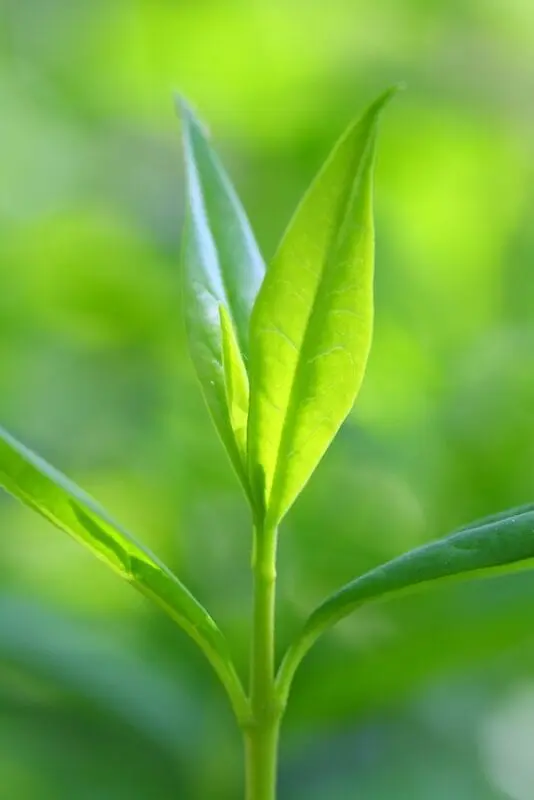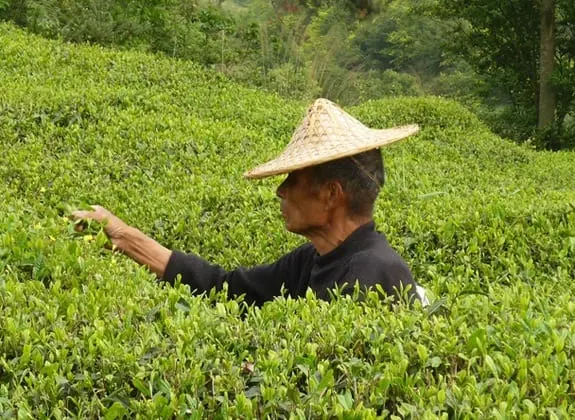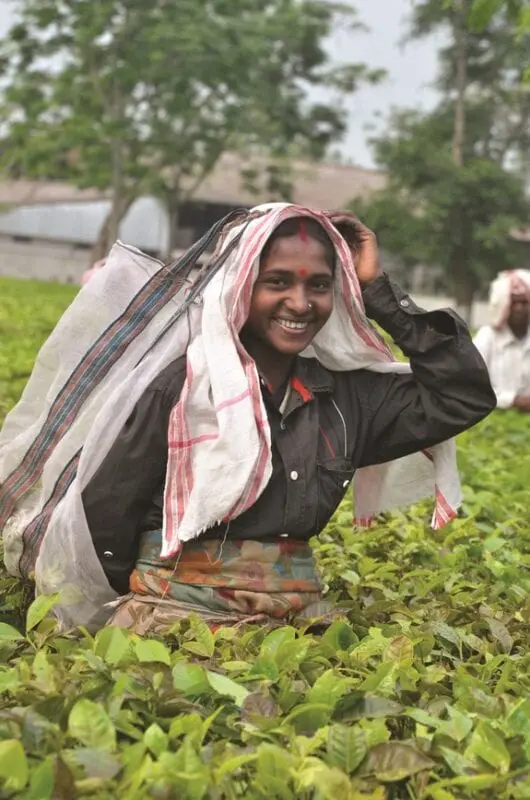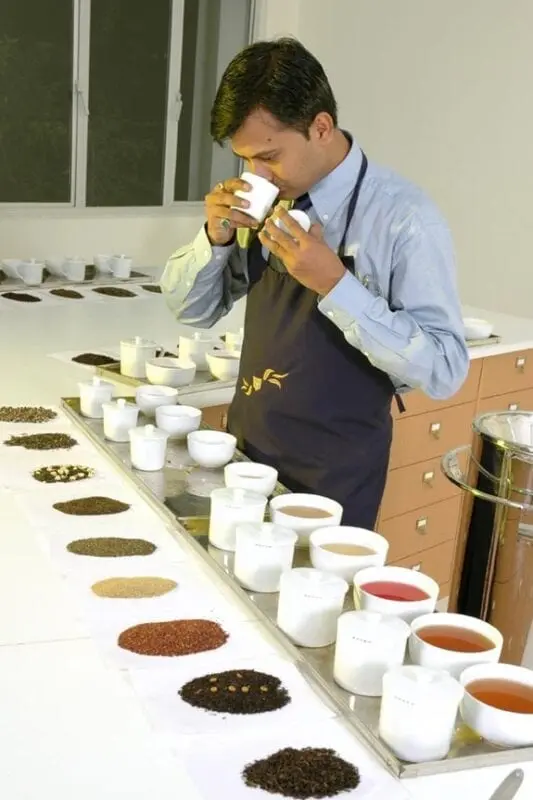 The birth of a miracle
The birth of a miracle
Tea is produced in different countries around the world, with different climates, growing conditions, soil type, and many different processing and production methods. As a result, we get many varieties and types of tea. Despite all this diversity, all tea is made from one plant – Camellia Sinensis (Chinese camellia).
Collecting tea is the most delicate art, on the possession of which its quality depends. The classic method of collecting Indian and Ceylon tea is to pluck the “top two leaves and the bud”, that is, the youngest shoots of the tea bush. Tea pickers pass through rows of tea bushes, the height of which is maintained at hand level for easy collection. Despite the invention of special machines, they have not been able to replace manual labor.
During the season, the leaves are collected from each tea bush about once a week. Each region has its own special variety of tea, methods of its collection and processing. In China, green tea prevails, in India and Sri Lanka-black tea. The tea harvest season in India is divided into four periods: during the first and second harvest (March-July), the best tea is collected, the autumn harvest is already collected from “tired” bushes, such tea can not boast of a rich taste.
A long way to go
Immediately after collection, excess moisture is removed from the tea leaves by withering or drying. According to Indian traditions, the leaves are dried in the open air or in a draft, the process can take from 8 to 24 hours, depending on climatic conditions. When the moisture content is reduced by about 50% and the leaves become sluggish, they are ready for the next stage of processing – twisting. For this purpose, special machines are used, but not all varieties of tea are twisted by machine or even subjected to this process.
Then the tea is fermented, turning the green tea leaves into the familiar black tea due to the oxidation process. The difference between green and black tea is due to the difference in the degree of fermentation. The range of possible options is huge: from unfermented Chinese white tea, weakly fermented pushong tea, semi-fermented oolong tea, and to fully fermented strong black Indian tea. In Ceylon and India, the fermentation process takes place at an ambient temperature of about 25° C. The process takes about two hours and is fully controlled by the masters to ensure the desired level of acidity of the tea, which will affect the taste of the infusion.
After that, the process is stopped by the method of exposure to hot air. This can be ordinary hot air drying or in the oven, roasting in a wok or hot steam treatment (Sencha tea). As a result of drying, the moisture level of the tea leaf decreases even more. In classic Indian and Ceylon tea, it should not exceed 2%, which increases the shelf life of the tea.
 Flavoring tea is an equally important part of its production. For this purpose, many different methods are used: essential oils are sprayed from a spray gun over a tea leaf in a drum mixer, pieces of dried fruit soaked in essential oil or dried flowers are mixed with a tea leaf in several passes, allowing the tea to be soaked in their aroma. For example, jasmine tea is a combination of green tea leaves with fragrant jasmine flowers, Earl Grey combines black tea with the aroma of bergamot oil, and lapsang souchong gets its characteristic aroma as a result of smoking the tea leaf over burning logs.
Flavoring tea is an equally important part of its production. For this purpose, many different methods are used: essential oils are sprayed from a spray gun over a tea leaf in a drum mixer, pieces of dried fruit soaked in essential oil or dried flowers are mixed with a tea leaf in several passes, allowing the tea to be soaked in their aroma. For example, jasmine tea is a combination of green tea leaves with fragrant jasmine flowers, Earl Grey combines black tea with the aroma of bergamot oil, and lapsang souchong gets its characteristic aroma as a result of smoking the tea leaf over burning logs.
After drying, the tea goes to the sorter, which sorts the tea according to the size of the leaf: whole-leaf from large leaves, small-leaf-from fragments of medium-sized leaves, “seeding” – small fragments of tea leaves. What remains of the leaves in the process of twisting and drying is called “dust”.
Without much ceremony
In order for the whole difficult and long way of tea from the bush to the cup not to be passed in vain, tea must be able to brew correctly. It does not require long tea ceremonies, the main thing is to know three basic rules:
1. Quantity. If you brew leaf tea in a teapot, it is recommended to put one teaspoon of tea with a top or one tea bag per person (at the rate of 250 ml of tea per person). If you prefer a strong tea, add another spoonful of leaf tea or one teabag “for  the teapot”. If the tea is green, then it can be put in a smaller amount, since most tea lovers prefer a lighter infusion of green tea. Herbal teas can vary greatly in volume and weight. Take two and a half teaspoons per person, if it is a rich fruit mixture (containing rosehip, raisins, apples). For lighter herbal blends (chamomile, mint, or rooibos), one topped teaspoon per person is sufficient.
the teapot”. If the tea is green, then it can be put in a smaller amount, since most tea lovers prefer a lighter infusion of green tea. Herbal teas can vary greatly in volume and weight. Take two and a half teaspoons per person, if it is a rich fruit mixture (containing rosehip, raisins, apples). For lighter herbal blends (chamomile, mint, or rooibos), one topped teaspoon per person is sufficient.
2. Water. Always use fresh water for brewing, it contains the maximum percentage of oxygen, which helps to reveal the character of the tea. For black tea, oolongs, and all herbal teas, pour water at the maximum boiling point. Green tea is best brewed with hot, but not boiling water – 70-80°C. To do this, simply boil the kettle and leave it to cool for a few minutes.
3. Time. It depends on how strong the tea you want to get. For leafy black tea and oolong, it is enough from 3 to 5 minutes, green and white-2 to 3 minutes, herbal teas-5 minutes. Tea bags are brewed 1-2 minutes faster due to the smaller size of the leaves.









